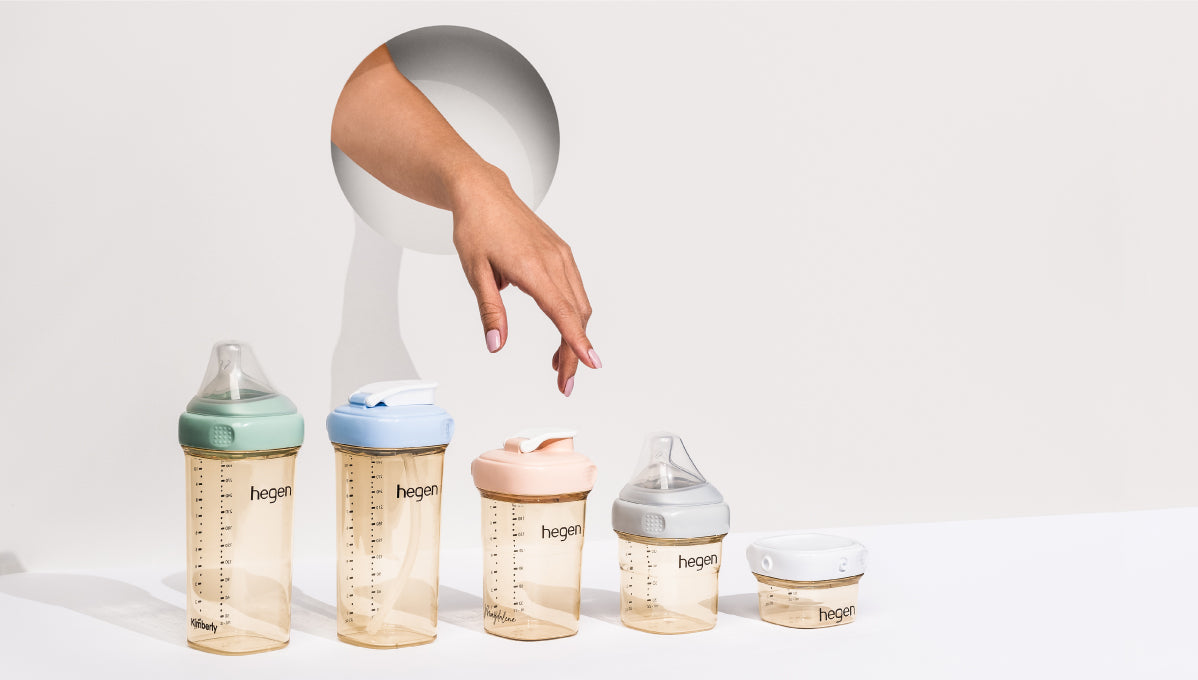When you think about caring for a newborn baby, what is the first thing that comes to your mind? Is it about breastfeeding? Then, perhaps you have been thinking about how to increase breast milk supply naturally? Whether you feed your baby directly from the breast or express breast milk with a pump, you would know that your breast milk is the best way to provide them with the nutrients they need to stay healthy.
Nature may not bless all mothers with a consistent and productive supply of breast milk; some may even struggle with the problems that come with breastfeeding. It is normal and common, but there are some ways you can increase your breast milk supply.
Causes of Low Milk Supply
Understanding how to increase breast milk supply starts with recognising the potential causes of low milk supply. They could include:
- Inadequate Breast Stimulation: If the baby does not latch correctly or if you are not pumping frequently enough, it may not stimulate enough milk production.
- Certain Medications: Some medications, particularly hormonal ones like birth control pills, can affect your milk supply.
- Health Issues: Certain health conditions, such as hormonal disorders or previous breast surgeries, can potentially impact milk production.
Recognising Low Milk Supply
Before you delve into exploring how to increase breast milk supply naturally at home, it is crucial to determine whether your supply is actually low. Mothers sometimes mistake their baby's behaviour or feeding pattern as an indication of low milk supply. However, certain definitive signs can indicate a genuine need for increasing breast milk supply. Here are three key signals to watch out for:
- Insufficient weight gain: Monitoring your baby's weight is a crucial indicator of their health and wellbeing. If your baby is not gaining weight as per the paediatrician's expectations, it could suggest that they are not getting enough milk. Slow weight gain or weight loss in babies could potentially indicate a low milk supply. However, always consult with your paediatrician to rule out any other health issues that might be influencing your baby's weight.
- Decrease in wet and soiled diapers: Another telling sign of your baby's milk intake is the number of wet and soiled diapers they produce each day. A well-fed baby generally has six or more wet diapers and at least three bowel movements in a 24-hour period, after the first five days of life. A noticeable decrease in the number of wet or soiled diapers may be an indicator that your baby is not getting enough milk.
- Persistent hunger or discontent after feeding: Babies have growth spurts where they feed more often, but these are typically short-lived. If your baby consistently appears unsatisfied or hungry even after feeding and cries more than usual, it might be a sign that you need to increase your milk supply. A baby who does not seem content, sleeps excessively, or has a weak cry might not be getting enough milk.
Remember, each baby is unique, and these are general signs. If you notice any of these signs, or if you are still unsure about your baby's feeding, it is always wise to reach out to a healthcare provider or a lactation consultant for guidance. They can provide advice tailored to your specific situation, ensuring the best for you and your baby.
How To Increase Breast Milk Supply, Naturally At Home
Your nutrition matters
There is a saying that you are what you eat – when you eat well, you feel well. Prioritising your nutrition and health, especially when you have a baby to take care of, is crucial as it can impact breast milk supply and quality.
While research on how to increase breast milk supply naturally at home may be limited, it is worth noting that certain foods are commonly said to enhance milk production. Fennel, fenugreek, and chickpeas, for instance, are potential galactagogues. These foods are known for their plant estrogens or estrogenic properties, which can help increase milk supply and promote lactation. However, these may not positively impact every lactating mother, as individual responses can vary.
The key is still to eat a well-balanced diet and live a healthy lifestyle to maintain a stable milk supply. Seek professional help from a lactation consultant if necessary.
Massage before pumping or latching
Performing a simple massage on your breasts before pumping or latching your baby can help to boost lactation. However, how you massage and how often you do so can have an impact on the outcome. With a Hegen PCTOTM Double Electric Breast Pump, you will be able to do it yourself effectively. Start by placing the kneading ring massager on specific meridian points for 15 seconds each – soon, you might notice an increase in your breast milk supply. When you massage your breasts before each pumping session, your blood circulation improves and you achieve letdown faster, making expressing or breastfeeding a smooth sailing and painless experience.
Increase frequency of latching or pumping
Understanding how your body’s system reacts to breastfeeding is essential. It supplies milk when there is a demand due to the hormone prolactin. Prolactin levels increase the more you nurse, stimulating your body to produce more milk as you go.
To increase your breast milk supply, we recommend you pump or latch your baby regularly at 2- to 3-hour intervals. Try pumping for 10 minutes on each side after latching to stimulate the production of more milk.
Try your hand at power pumping by pumping with your electric breast pump for about 10 to 20 minutes and resting for 5 to 10; repeat this cycle for another two or three cycles. Be mindful not to overdo it to prevent any breast or nipple soreness.
Stay positive and encourage yourself
Maintaining a positive mindset is the best way to approach your problem. Keep happy and positive to produce more oxytocin, known to some as the love hormone, for breast milk production. This hormone plays a huge role in motherhood, signalling your body to go into labour and release breast milk.
There are many easy ways to increase oxytocin levels, like physical touch. Get a hug from your partner and loved ones or ask them to give you a relaxing massage – as your happiness and satisfaction increase, the hormone levels do too.
It is important to encourage yourself. Do not compare your yield with others; everyone is different in many ways, and your obstacles do not define you. If you notice others putting you down, perhaps you can let your husband manage discouraging comments from family members and let him have your back. Being a mother can be challenging, having a reliable support system goes a long way.
How to Increase Milk Supply When Pumping
In this journey towards understanding how to increase milk supply when pumping, it is important to keep some key strategies in mind. These methods are aimed at helping mothers ensure they can nourish their infants effectively and without stress.
- Frequent and consistent pumping: Maintaining a regular pumping schedule tricks your body into producing more milk. Aim for at least eight to ten pumping sessions per 24-hour period, especially in the early weeks after birth. If you have excess milk, you can consider storing them in milk storage bottles or feeding bottles.
- Double pumping: Double pumping, or pumping both breasts simultaneously, not only saves time but also can lead to increased prolactin levels, the hormone responsible for milk production.
- Effective pump usage: Using a high-quality, efficient breast pump is crucial. You can combine latching and expressing as well, by using a quality portable manual breast pump after your baby has fed from the breasts.
- Proper latching and positioning: Make sure that your breast pump flanges are properly fitted. Ill-fitted flanges can cause discomfort and negatively impact your milk supply.
- Optimal nutrition and hydration: Maintaining a balanced diet and drinking plenty of fluids can boost your overall health and indirectly improve milk production. Some foods are often associated with increased milk supply, such as oats, almonds, and fennel seeds.
- Mindful practices: Stress can hinder milk production. Incorporate relaxation techniques, such as deep breathing or mindfulness, into your daily routine. The happier and more relaxed you are, the more conducive your body can be to producing breast milk.
The Bottom Line on Boosting Your Milk Supply
Love is not measured in millimetres. Even if you have a lesser milk supply than expected, it does not mean you are not doing enough as a mother. Motherhood can be an unexpected journey, seek help and advice when you need it.
Incorporating these strategies can go a long way in answering the question of how to increase milk supply naturally and at home. Remember, each body responds differently to various methods. It is about finding what works best for you.
If you continue to struggle with low milk supply, consider reaching out to a lactation consultant for personalised advice. Hegen Lactation Centre provides lactation consultation services to assist you and assess the breastfeeding issues you may face. Our highly qualified and friendly lactation consultants will know what is best for you and your baby, keeping you comfortable and cared for. Visit our website today to discover more.
Your journey in motherhood is unique, and there is always help available.





